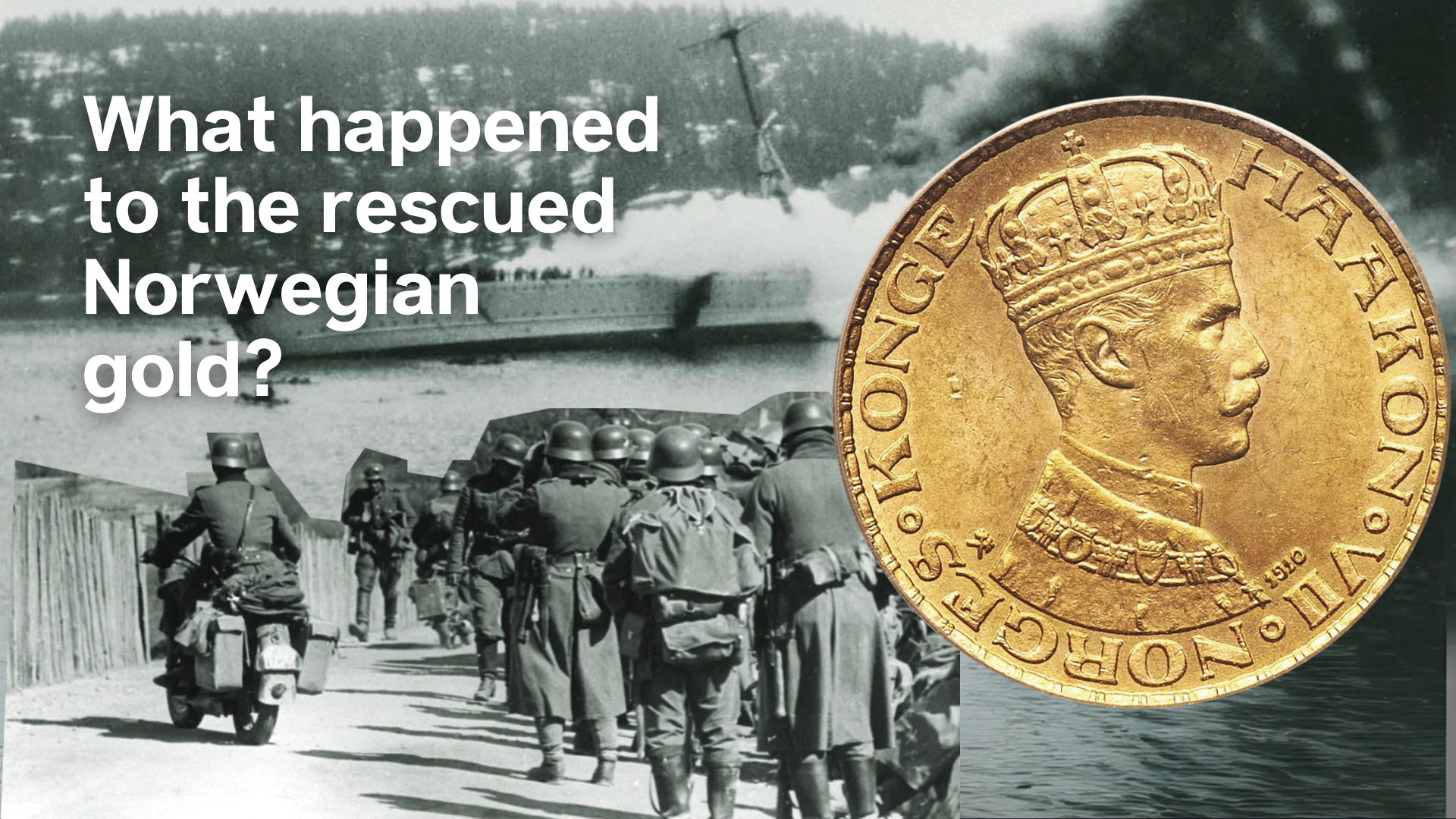

In 1940, as Nazi Germany launched its invasion of Europe, Norway faced the imminent threat of occupation. In a desperate and daring mission, Norwegian officials orchestrated the evacuation of the nation’s gold reserves to prevent them from falling into enemy hands.
The successful evacuation of Norway’s gold reserves during the German invasion in April 1940 was a monumental effort that ensured the country's financial sovereignty throughout World War II. However, the story of the gold did not end with its escape from Norway; it continued to play a crucial role in the country's wartime strategy and post-war economy.
After being transported across Norway under immense peril facing German air raids, roadblocks, and mechanical failures the 49 tons of gold eventually reached Tromsø in May 1940. From there, it was transferred to the British cruiser HMS Enterprise and shipped to the United Kingdom, completing its escape from Nazi-occupied Norway.
Upon arrival in Britain, the gold was initially stored in the Bank of England. However, given the looming threat of a German invasion, the Norwegian government decided to move the reserves even further from harm. During June and July 1940, the gold was transported across the Atlantic and deposited in secure locations at the Federal Reserve Bank in New York and the Bank of Canada in Ottawa. This ensured that Norway's wealth remained safe and accessible to the government-in-exile.
As Britain struggled with its own financial difficulties in 1940, the British government sought to gain control over Norway's foreign exchange reserves in the UK. They pressured the Norwegian government to hand over management of these funds as a contribution to the war effort. However, Norwegian officials, fearing the long-term consequences of such an arrangement, firmly rejected the demand. Their stance was vindicated in 1941 when the American Lend-Lease Act provided Britain with much-needed financial aid, reducing their interest in the Norwegian reserves.
After the war, the majority of Norway’s gold reserves remained abroad. Given the political and economic stability of international financial institutions, Norway saw little reason to repatriate the gold. Instead, it continued to be managed by the Bank of England and other financial bodies.
In 2004, Norges Bank decided to sell off its remaining gold bars—approximately 33.5 tons that had been returned to the Bank of England after the war. However, seven gold bars were retained for historical and commemorative purposes.
While the gold bars were sold, a significant portion of the gold coins involved in the wartime rescue did return to Norway. In 1987, as Norges Bank completed its new headquarters, around 3.5 tons of Norwegian and Norwegian-Swedish union coins—approximately 415,000 in total—were brought back. These were preserved as a historical testament to the dramatic escape of the gold reserves.
The Norwegian gold reserves, once at risk of falling into enemy hands, played a vital role in sustaining the country's wartime government. Though much of the gold never returned to Norway, its preservation allowed the nation to maintain financial stability and independence during and after World War II. Today, the surviving gold coins serve as a lasting reminder of one of Norway’s greatest acts of defiance and perseverance during its darkest hour.